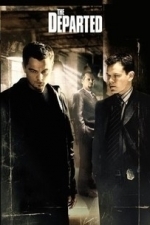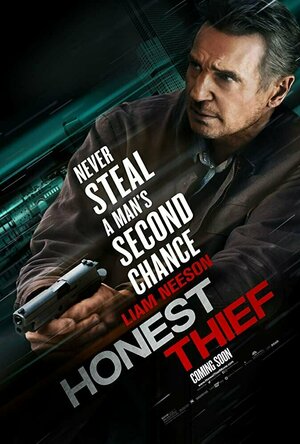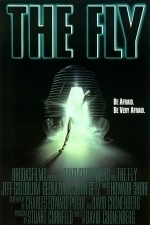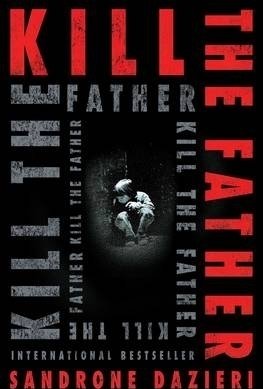
Kill the Father
Book
'The rock cast a sharp, dark shadow over a shape huddled on the ground. Please don't let it be the...
Sarah (7800 KP) rated The Departed (2006) in Movies
Feb 20, 2021
The Departed is Martin Scorcese’s Oscar winning Irish gangster film released in 2006, a remake of the 2002 Hong Kong film Infernal Affairs, and loosely based around the real life Boston Hill Gang led by Whitey Bulger. It’s a film I remember watching when it was first released when I was at university, and I was blown away. It centres around Irish gang boss Frank Costello (Jack Nicholson) and his relationships with police detective mole Colin Sullivan (Matt Damon) and undercover state trooper Billy Costigan (Leonardo DiCaprio), as the latter two attempt to uncover each other’s identities.
Colin Sullivan was introduced to Costello as a young boy, groomed into joining the Massachusetts State Police and soon rises to the ranks of detective in the Special Investigation Unit, led by Captain Ellerby (Alec Baldwin)and responsible for bringing down Costello and his gang. Conversely Billy Costigan suffered a troubled youth with numerous members of his family involved in Costello’s gang. He trains as a state trooper and due to his family’s criminal ties, is turned into an undercover agent by Captain Queenan (Martin Sheen) and Staff Sergeant Dignam (Mark Wahlberg), his role to infiltrate Costello’s gang. Soon suspicions are raised and the net begins to close in on everyone involved, with dire consequences.
Personally, I think this is one of the best gangster films I’ve ever seen, if not the best. It’s everything you’d expect and more from a film in this genre, and I’m not sure anyone other than Scorcese could pull off a crime thriller that manages to feature such prominent Celtic music with such flair. It has a whip smart, often funny script that features some cracking one liners and quips, especially from Mark Wahlberg’s Dignam. Yes it is a little crude and some of the dialogue could be considered as offensive by some, but to me this just makes it more realistic as you can’t exactly expect gangsters and police to talk politely. Of course the script is brought to life by a truly phenomenal cast, and arguably one of the best ensembles in a gangster film in terms of talent. Leonardo DiCaprio is no longer the fresh faced youngster he was in the days of Titanic, although he puts in a terrific performance as Billy. This is also one of the few films I’ve seen of Matt Damon’s where he doesn’t play a nice guy, and he really fits this surprisingly well. But it’s Nicholson who steals the show as Costello and he definitely gets the biggest share of the witty script, bringing some light humour to an otherwise menacing criminal figure. You can’t keep your eyes off him whenever he’s on screen, and I don’t believe anyone else could pull this off without seeming like an over the top caricature.
However it isn’t perfect. The relationship between police psychiatrist Madolyn Madden (Vera Farmiga) and both Sullivan and Costigan is a little unnecessary and not important to the main plot, but fortunately the performances from all involved mean this isn’t a major issue. And again, the film is rather long but fortunately the tense scenes and great acting, alongside a few well placed action scenes, mean it never feels too drawn out.
This is a shining example of how to do a gangster film, and one I’d wholeheartedly recommend. It’s an intelligent, performance driven masterpiece and entirely deserving of it’s Best Picture Academy Award win.
Bob Mann (459 KP) rated Honest Thief (2020) in Movies
Dec 3, 2020
The nice concept behind the story sees Tom (Liam Neeson) as a hugely successful bank robber meeting the love of his life in Annie (Kate Walsh) and committing to jack it all in for love. Furthermore, not wishing to have to live with the deception and guilt of his hidden life, he determines to hand himself over to the FBI, along with the $9 million stolen cash, in return for a lenient sentence.
There's a problem though: he's about the fifteenth person calling the FBI claiming to be the "In and Out burgler", so no-one wants to take him seriously. Boston area chief Sam Baker (Robert Patrick - the "Terminator" cop!) and his deputy Meyers (Jeffrey Donovan) casually put it on the "to-do" pile of agents Nivens (Jai Courtney) and Hall (Anthony Ramos).
The best laid plans run off the rails in a big way though when Nivens and Hall investigate and find that Tom is the real deal.
The concept here works nicely for a thriller, but the rest of the script is so formulaic that it's fairly and squarely a 'park your brain in the foyer' movie. For several of the actions and motives going on here, suspension of disbelief was required . Even given the limited competition in 2020, the script is in no way going to trouble the Academy.
All that being said, Mark Williams has put together a tight and well-executed movie, not outstaying its welcome at only 99 minutes long. Even with the 15 year age difference, Neeson and Walsh make a believable couple (given that Neeson looks pretty good for his 68 years) and the chemistry between them is great. And for a pretty 'small' movie, the supporting cast is pretty impressive.
Another standout for me was the cinematography by Shelly Johnson (whose had a busy year with the latest "Bill and Ted" and "Greyhound" under his belt). Boston - always a great movie location - looks spectacular, and the framing of the car chase action impressed me.
For me, there was only one really dodgy element of the movie: the special effects used in a house explosion/fire. The budget clearly didn't stretch to using practical effects! More work on Adobe "After Effects" (or similar) was required here!
Is Honest Thief worth seeing? - My expectations for this movie were pretty low. But I'm pleased to say that they were exceeded. Is it a masterpiece? No. Will I readily remember much about it in six month's time? No. But in rather a desert of new releases, this one was at least entertaining and I think it's worth the ticket price for a long overdue night out at the flicks. I'm willing to guess that my feelings were partially influenced by the sheer joy of being back in a cinema again... so I will temper my rating perhaps by a star here.
(For the full graphical review, please check out One Mann's Movies here - https://rb.gy/9kcnr5. Thanks.)
Andy K (10823 KP) rated The Fly (1986) in Movies
Oct 3, 2019
After a chance meeting at a social magazine function, Veronica "Ronnie" Quaife meets the eccentric genius Brundle. She agrees to come back to his spacious, warehouse studio loft to see what he has been working on. He tells her about his masterpiece that will change the concept of travel throughout the world. After a short demonstration, Ronnie is not sure what to believe.
The next day, she explains what happened to her editor and scummy, sexist former boyfriend who suggests Brundle is just a con man. Eventually, Ronnie takes the offer to be Brundle's exclusive recorder of the evolution of his creation which has still one major flaw, it can only teleport inanimate objects. When tried on something living, the computer doesn't understand "the flesh" turn disembowels its subjects.Ronnie and Brundle begin a torrid affair amidst more work on the pods ultimately concluding with the successful teleportation of a baboon.
After Ronnie's boss and former lover threatens to publish her story early, Brundle gets drunk and decides it is time for a human trial of his newly perfected equipment. In his haste, he does not notice an insect guest present within his pod with him. Although successful, Brundle is not aware of his transformation yet to come.
His evolution from man to man/insect begins slowly, but continues relentlessly though Brundle does not know the cause. Once he looks through his records and discovers the genesis of his misfortune, he may be too late to stop it.
The Fly has to be director David Cronenberg's biggest financial hit grossing north of $40 million in 1986. Adjusted for inflation and considering the subject matter, genre and R rating, that would have to be much more if released today. It's hard to say the film would be Cronenberg's highest critical success, although most of his early films are now considered cult classics since they had a hard time finding mainstream audiences due to their "body horror" often gruesome visuals and offbeat subject matter.
Although most would classify as horror due to the shocking visuals within the last 30 minutes of the film, I have always felt it was more of a thriller. Once Bundle is infected, he has to use his sharp, but now deteriorating wits to figure a solution to his problem before it is too late. Every subsequent Ronnie visit to Brundle's loft finds unexpected results which keep the viewer on edge and wondering what horrors they will view next.
The make up effects in the film rivaled any of the top work ever at that time and garnered effect artist Chris Walas an Academy Award in 1986. By today's standards of CGI and film perfection, some elements could look a bit dated to modern audiences, but I believe still hold up to present day scrutiny.
The film score by frequent Cronenberg collaborator Howard Shore is haunting, bleak somber, and excellent.
Too often mesmerizing acting performances in horror/thriller movies get overlooked for the Oscars (except if you are Anthony Hopkins) which is a shame here. Jeff Goldblum undergoes not only a physical transformation, but his mannerisms, ticks and speech all go from human to insect and he deserves a lot of credit for what he did to bring "Brundlefly" to life.

All In One Photo Studio Lab
Lifestyle and Photo & Video
App
All In One Photo Editor – The only photo studio tool that has it ALL and the only one you will...

Nail Makeover 3D Beauty Salon: DIY Fancy Nails Spa Manicure
Lifestyle and Games
App
Stylish nail divas, now you can express your fashion nail art skills in one of the most stunning...

AutoRap by Smule
Music and Entertainment
App
Say something. AutoRap turns your speech into rap. Choose from 100+ beats from artists like Drake,...

Crashlands
Entertainment and Games
App Watch
"...a design masterpiece." 5/5 - TouchArcade 2016 Game of the Year - TouchArcade, Gamezebo Time's...
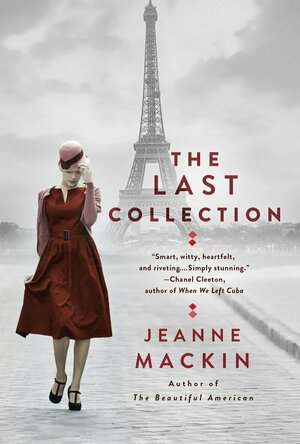
The Last Collection
Book
An American woman becomes entangled in the intense rivalry between iconic fashion designers Coco...
Historical Romance

Wallpaper Plus - Cool Wallpapers, Cool Backgrounds
Entertainment and Lifestyle
App
Beautiful, Quirky, Funny, Kitschy - whatever you need. Only Wallpaper App with 100,000+ awesome...
